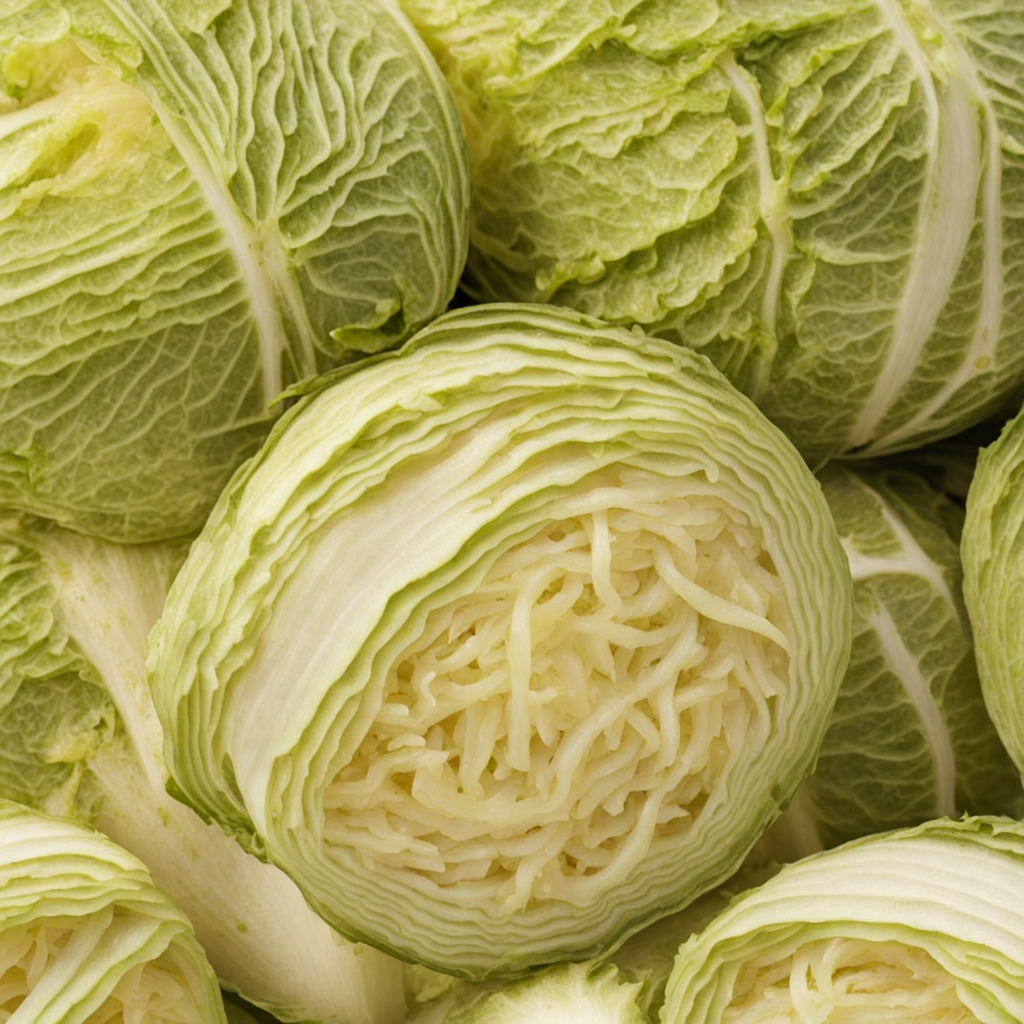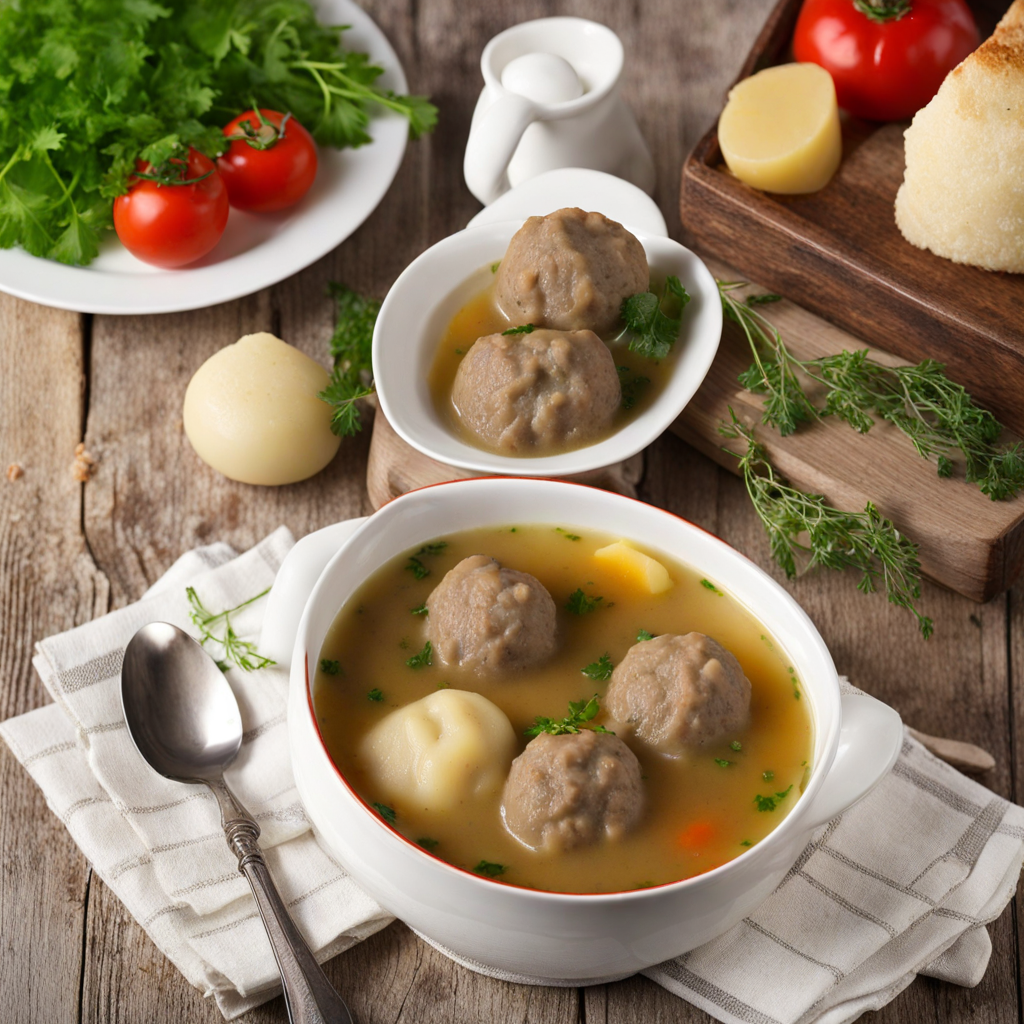Germknödel
Germknödel is a delightful Austrian dessert that beautifully showcases the country's rich culinary heritage. This steamed yeast dumpling is traditionally filled with a luscious plum jam, known as Powidl, which imparts a sweet and tangy flavor profile that perfectly contrasts with the soft, fluffy texture of the dumpling itself. The dough, made from simple ingredients like flour, milk, sugar, and yeast, is kneaded until it reaches a smooth consistency, allowing it to rise and develop a lightness that makes each bite a tender experience. Once cooked, Germknödel is typically served with a generous drizzle of melted butter and a dusting of powdered sugar, enhancing its sweetness while adding a luxurious richness. Some variations include a sprinkling of poppy seeds that not only provide a beautiful visual contrast but also a nutty flavor that complements the sweetness of the filling. The combination of flavors and textures makes Germknödel a comforting dessert that evokes a sense of warmth and nostalgia, often enjoyed in ski lodges during winter or as a special treat during festivals. Eating Germknödel is an experience in itself; as you cut into the dumpling, the warm, gooey plum filling oozes out, inviting you to savor each mouthful. The balance of sweetness from the filling, the richness of the butter, and the delicate structure of the dumpling creates a harmony that is truly unforgettable. For anyone looking to explore the diverse world of Austrian cuisine, Germknödel is a must-try, offering a unique taste that captures the essence of the country’s culinary artistry.
How It Became This Dish
Germknödel: A Journey Through Austrian Culinary Heritage Germknödel, the fluffy and delightful dumpling filled with plum jam and dusted with poppy seeds, is a quintessential dish of Austrian cuisine, particularly beloved in the alpine regions. As we delve into the history of this delectable treat, we uncover its origins, cultural significance, and the evolution it has undergone over the centuries. Origins and Early History The roots of Germknödel can be traced back to the rich tapestry of Central European culinary traditions that emerged in the early medieval period. Dumplings, in various forms, have been a staple in many cultures, serving as a practical means of sustenance that utilized readily available ingredients. In Austria, the combination of flour, water, and yeast to create a doughy base has been recorded as far back as the 13th century. The introduction of ingredients such as plum jam reflects the agricultural bounty of the region, where fruit trees flourished in the temperate climate. The name "Germknödel" itself derives from the German word "Germ," meaning yeast, which is the leavening agent that gives the dumpling its characteristic light and airy texture. The “Knödel” part refers to the dumpling, a term widely used across German-speaking regions. This dish was likely developed out of necessity, as communities sought to create hearty meals that could satisfy hunger during the long, harsh winters. Cultural Significance The Germknödel carries a deep cultural significance in Austria, particularly in the Tyrolean and Salzkammergut regions. It embodies the spirit of alpine cooking, which emphasizes comfort and sustenance. Traditionally served as a dessert or sweet main dish, Germknödel is often enjoyed in ski lodges and mountain huts, where hearty meals are essential after a long day of outdoor activities. The dish is typically served warm, smothered in melted butter, and sprinkled with ground poppy seeds and sugar, creating a delightful contrast of flavors and textures. Beyond its culinary appeal, Germknödel is woven into the social fabric of Austrian life. The act of preparing and enjoying this dish is often a communal experience, bringing families and friends together around the table. It serves as a reminder of the simplicity and beauty of home-cooked meals, where the focus is on quality ingredients and shared experiences. Evolution Over Time As Austria evolved through the centuries, so too did the Germknödel. The 19th century marked a significant period in Austrian gastronomy, with the rise of the Viennese coffee house culture and an increased interest in regional specialties. This era saw the establishment of the Germknödel as a symbol of Austrian culinary identity, spreading from the rural heartlands to urban centers. In the early 20th century, the dish began to gain further recognition beyond the borders of Austria. The post-World War II era saw a resurgence of interest in traditional foods across Europe, and Germknödel became emblematic of the Austrian revival, celebrated for its rustic charm and hearty flavors. Cookbooks began to feature the dish, and it was included in various culinary festivals across the country, reinforcing its status as a beloved national treasure. Modern Variations and Global Influence In contemporary times, Germknödel has undergone various adaptations while still remaining true to its origins. Chefs in Austria and abroad have experimented with different fillings, ranging from chocolate and vanilla to seasonal fruits, catering to evolving tastes and dietary preferences. The rise of vegetarianism and veganism has also prompted innovative versions of Germknödel, using plant-based ingredients to maintain the essence of the dish while accommodating diverse diets. The global culinary landscape has also embraced Germknödel, with restaurants around the world featuring it on their menus, often as part of a larger exploration of Central European cuisine. This international exposure has introduced new audiences to the dish, allowing it to transcend its regional roots while simultaneously highlighting its cultural significance. Conclusion Today, Germknödel stands not only as a beloved dessert but also as a symbol of Austrian heritage. It reflects the ingenuity of the people who created it, a dish born from necessity that evolved into a culinary icon. Its journey from humble beginnings to international recognition showcases the importance of food in shaping cultural identity and fostering community. As we savor a warm Germknödel, we are reminded of the rich history that lies within each bite—a history steeped in tradition, resilience, and the enduring love for good food. Whether enjoyed in a cozy mountain hut or a bustling city café, Germknödel continues to bring warmth and joy, a testament to the power of culinary traditions to connect us across time and space. In every dumpling, there is a story—a story of place, of people, and of a shared passion for nourishment that transcends generations.
You may like
Discover local flavors from Austria







